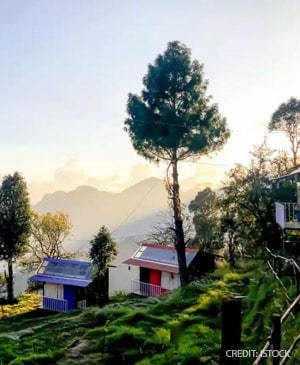Birding in Rajasthan
Our Rajasthan birding tour is an experience complete in itself. We cover both the desert and hilly regions, the dry and wet parts of the north western state of Rajasthan to help you see some of the rarest and highly sought-after resident and migratory birds of the Indian subcontinent.
The largest Indian state in terms of area, Rajasthan is a land of contrasting geographies. The Aravalli mountain range cuts the state diagonally from southwest to northeast in a roughly 60-40 ratio, the larger portion being the arid desert scrubland to the west and the smaller being the fertile plains to the east. These diverse ecosystems – desert, hills, and plains – are home to about 633 species of resident and migratory birds that can be spotted in national parks, wildlife sanctuaries, and other natural habitats like forests, grasslands, lakes and rivers, thereby making Rajasthan a prime location for anyone looking for the best birding tours of India.
The state has 5 national parks and as many as 25 wildlife sanctuaries that are home to a fascinating diversity of birds. A persevering bird-watcher on a smartly guided Rajasthan birding trip usually gets rewarded with the rare sightings of birds like the Great Indian Bustard (the state bird of Rajasthan), Stoliczka’s Bushchat, White-bellied Minivet, Lesser Adjutant Stork, Indian Spotted Creeper, Green Avadavat, Sykes’s Nightjar, Painted Sandgrouse, White-naped Tit and Lesser Florican. The success of a birding tour of Rajasthan depends upon how cleverly the itinerary is drawn and what birding areas you get to explore.
Topping the list of these Rajasthan birding hotspots is Keoladeo National Park, formerly known as Bharatpur Bird Sanctuary. A World Heritage Site, the national park comprises of woodlands, swamps, wetlands and grasslands that host 366 species of birds. The park is a breeding ground for storks, cormorants and herons. Migratory birds flying in from the colder northern regions converge at Keoladeo National Park before dispersing to other parts of the Indian subcontinent. At Keoladeo, you get to see Indian Grey Hornbill, Painted Stork, Eurasian Spoonbill, Eurasian Coot, Great Egret, Knob-billed Duck, and a whole lot of raptors like Pallas’ Sea Eagle, Peregrine Falcon, Crested Serpent Eagle, and many more. Here, you see in great numbers waterfowl such as Common Teal, Cotton Teal, Little Cormorant, Great Cormorant, Darters, and waders like White Spoonbill, Asian open-billed Stork, and Oriental Ibis. And if you are in luck, you may even see the courtship dance of Sarus Crane.
Likewise, the Tal Chhapar Sanctuary in north western Rajasthan holds out excellent bird-watching prospect. Located on the edge of the Thar Desert, the sanctuary is a flatland with saline depression, abundant grass, and scattered growth of acacia and prosopis trees. Here, one may spot an interesting variety of birds like Indian Spotted Creeper, Grey Francolin, Xinjiang Shrike, Stoliczka’s Bushchat, Siberian Stonechat, Demoiselle Crane, Southern Grey Shrike, Black Ibis and Chestnut-bellied Sandgrouse. The sanctuary is a flourishing habitat of migratory and resident raptors, such as Montagu’s Harrier, Pale Harrier, Marsh Harrier, Short-toed Eagle, Tawny Eagle, and Imperial Eagle. Other commonly sighted birds are Skylarks, Crested Larks, Brown Dove, Ring Dove, Little-Green Bee Eaters, and Blue Jay, among many others.
Desert birds are an undisputed attraction of any birding trip of Rajasthan and they are to be found in plenty at the Desert National Park, situated right in the Thar Desert. For a first-timer, a trip to this park is filled with wonderment as to how so many birds can thrive in such a fragile ecosystem of sand dunes, craggy rocks, and salt lake beds. Yet, there are birds aplenty: eagles, falcons, harriers, kestrels, vultures, buzzards, sandgrouses, partridges, bee-eaters, shrikes and larks. The main attraction of the park is the Great Indian Bustard, which is endangered but found in comparatively better numbers here than at other birding locations of Rajasthan.
Two tiger reserves, namely Ranthambore National Park and Sariska National Park, are host to a great diversity of wildlife. At these parks, one may sight tigers, leopards, boars, hyenas, sambars, bears, deer, macaques, langurs and crocodiles besides watching birds like Grey Francolin, Baya Weaver, Ruddy Shelduck, Peacock, Bar-headed Goose, Brahminy Starling, White-browed Large Pied Wagtail, Indian River Tern, Woolly-necked Stork, Purple Heron, Wryneck Woodpecker, Black/Red Headed Bunting, Babbler (Common, Jungle & Large Grey), Crested Serpent Eagle, White Breasted Kingfisher, Small Minivet, Golden Oriole and Great Grey Shrike.
Other preferred birding areas of Rajasthan are: National Chambal Gharial Wildlife Sanctuary, Mount Abu Wildlife Sanctuary, Kumbhalgarh Wildlife Sanctuary, Sambhar Lake, and Gajner Wildlife Sanctuary.
We at India Birding Tours pick out the best spots for our Rajasthan birding tour based on our years of experience of birding in this region. Our specially designed Rajasthan birding expedition puts you at the choicest spots on either side of the Aravalli mountain range to give you some rare sightings of many wonderful feathered friends.
Alongside, we provide you with the option to customize your Indian birding in Rajasthan with culture trips, wildlife safaris, and visits to historical monuments.
Fun Things To Do On Birding IN RAJASTHAN:
- Visit some of the forts and palaces of Rajasthan
- Enjoy a tour of rural Rajasthan and meet up with village folks
- Go on wildlife safari in any of the tiger reserves
- Check out the unique music and dances of Rajasthan
Endemic Birds Of Rajasthan
Great Indian Bustard, Grey Junglefowl, Red Spurfowl, Painted Spurfowl, Pink-Headed Duck, Rock Bush Quail, Forest Owlet, White-cheeked Barbet, Green Avadavat, White-naped Tit, Rufous-tailed Lark, Sykes’s Lark, Tytler’s Leaf Warbler, Marsh Babbler, and Malabar Whistling Thrush.






